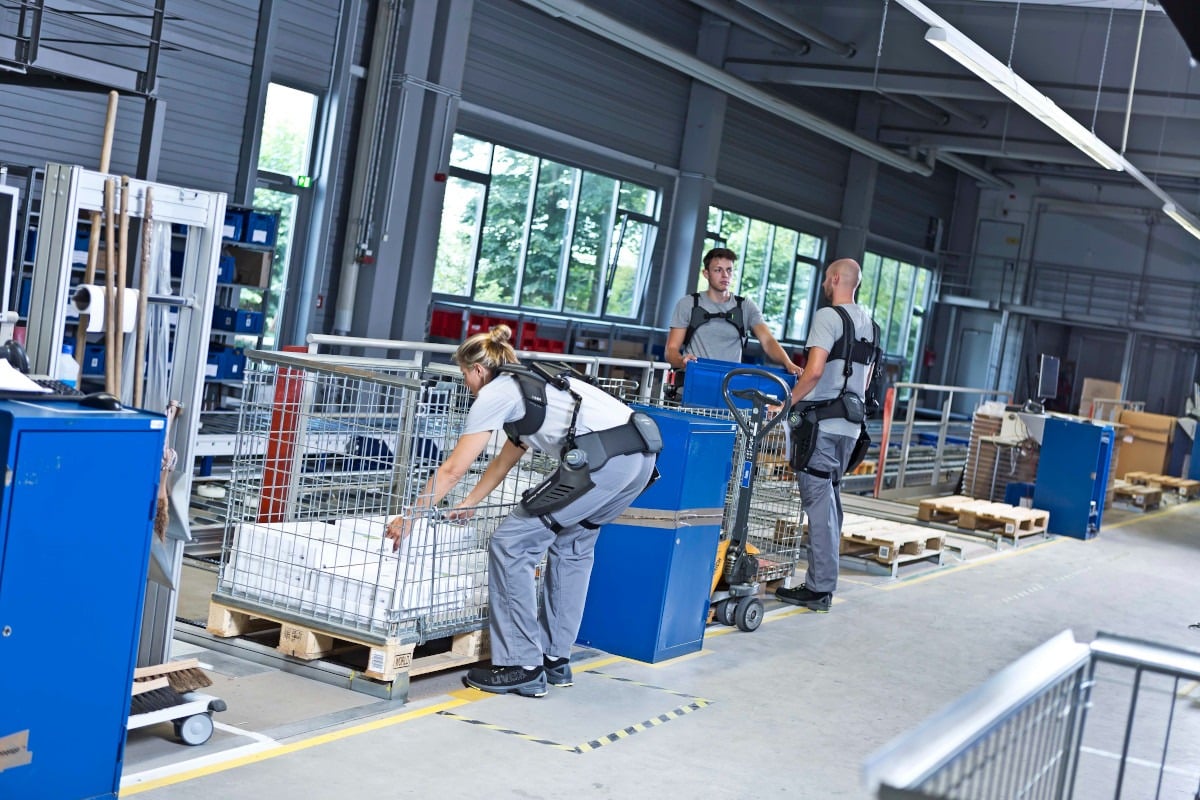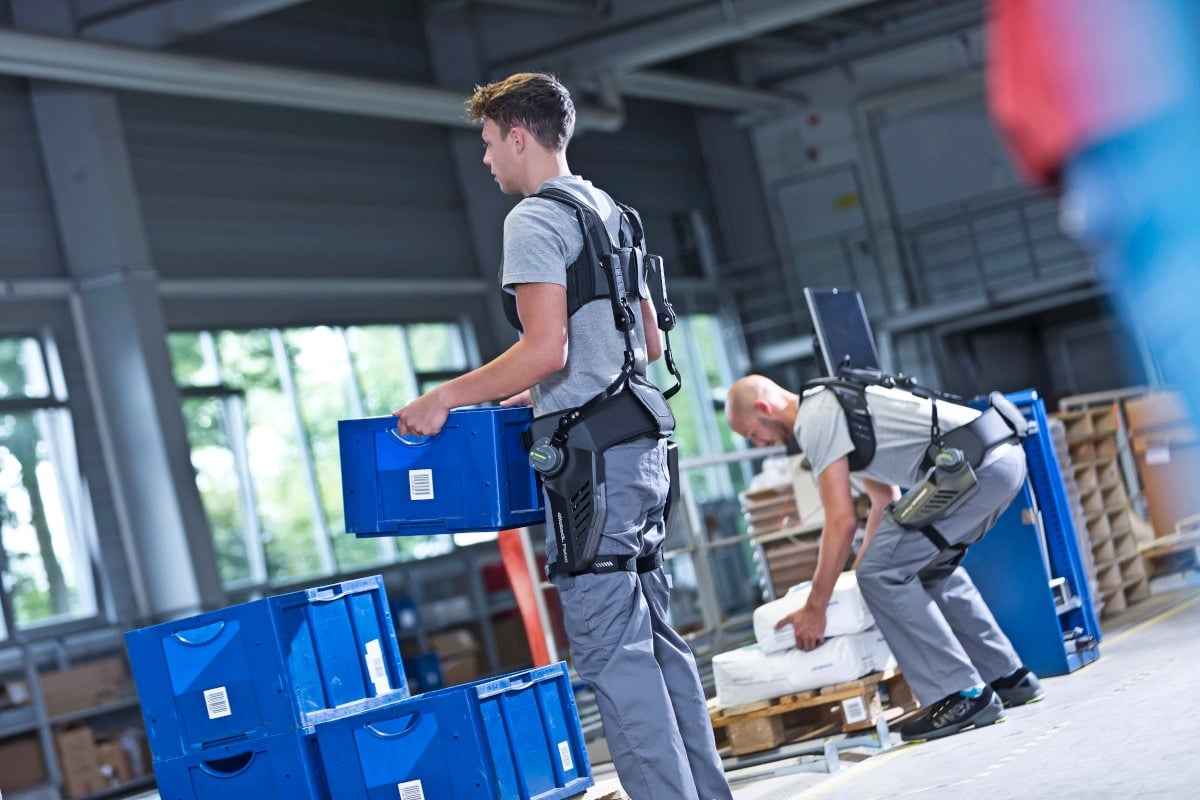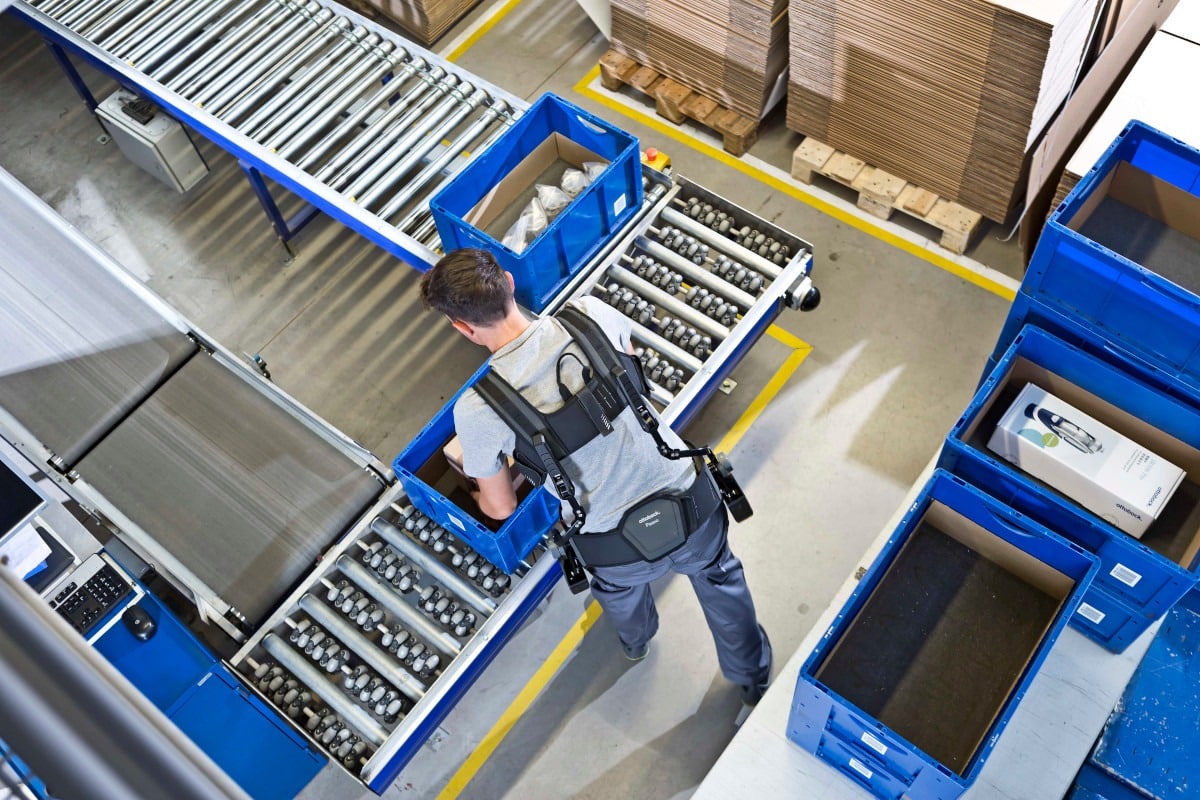Exoskeleton: the intelligent solution for minimizing workloads in logistics?
The human body is exposed to constant stress which, depending on the duration and intensity, can cause signs of wear. In logistics in particular, there are many sectors in which physical effort is the standard, despite all the aids available. Joint pain is not only a problem for the person affected, but naturally also minimizes efficiency in the company. The help of a so-called exoskeleton aims to make work easier precisely where constant carrying, lifting and bending leads to long-term damage.
Definition of exoskeleton: the external support skeleton for physically active people
The term “exoskeleton” as such is derived from the ancient Greek, exo meaning “outside” and skeletós meaning “dried out body”. Even though there are natural forms of exoskeletons in nature, such as the shells of snails or mussels, the focus is clearly on artificial everyday aids.
One example: so-called orthoses. Orthoses, i.e. splints for the purpose of stabilizing or relieving certain parts of the body, are an important tool for therapy and regeneration in medicine. Further developed orthoses with special focal points then correspond most closely to an exoskeleton.
When talking about industrially used exoskeletons, experts generally refer to them as ergoskeletons. They have a drive and are designed specifically for use where heavy physical work is the norm. More on this in the next paragraph.
The exoskeleton as a support for warehouse employees: use in logistics
Regardless of whether it’s production or goods management, certain jobs can only be automated to a limited extent. This is mainly due to quality aspects and issues of practicability, for example in the case of relatively small quantities or a diverse product portfolio. This requires capacity utilization and the ability to concentrate, while at the same time a lot of small-scale work makes you relatively tired – the regeneration time therefore influences the efficiency of the entire department.
In the warehouse itself, the following aspects can be better controlled with the help of an exoskeleton:
- Support for monotonous or stressful postures
- More even load distribution when lifting, moving and handling heavy objects
- Reduction of safety risks through a mix of function and protection (e.g. through certain surfaces)
- Reduction of vibrations which, if sustained, increase the risk of musculoskeletal disorders (MSDs)
In short, an exoskeleton increases workplace safety, reduces the wear and tear of many individual work steps and at the same time increases efficiency in the relevant sub-segment.
Forms and variants of an exoskeleton
There are different versions that are suitable for use in logistics. These include, for example, pneumatic exo hands, which are practically similar to a glove, but which support power transmission and therefore help with fine motor tasks. Handling in the small parts warehouse can therefore also be supported during longer periods of use.
Another possible area of application is in assembly line areas or packing workstations, where the operator adopts a bent-forward posture for long periods of time – with consequences for the lumbar vertebrae. But order pickers also have to remove heavy loads from floor stations, which puts a lot of strain on their backs.
Please note: a basic distinction can be made between active and passive exoskeletons. The former is powered by a rechargeable battery, direct power supply or compressed air, whereas passive systems are better at cushioning and evenly distributing the weight.
Excursus: exoskeleton in industry – ergoskeletons or robot suits
Constant heavy lifting, shifting, etc. reduces the performance of every employee in the long term. And since qualified employees are the company’s most important resource, this also explains the efforts to use exoskeletons specifically for use in industry and logistics. They are at the center of tests and prototypes that are primarily used in the automotive industry. For example, an exoskeleton is worn on the back of the legs in order to support them and be used as required (based on the degree of stiffening).
The highlight: where new production areas are being created anyway, exoskeletons are already part of the planning. The workforce is getting older, so the importance of an ergonomic working environment is increasing. The task of an exoskeleton is therefore both to make work easier and to prevent injuries, particularly in the musculoskeletal area. In principle, anything that is attached to the body from the outside and supports it at certain points is considered an exoskeleton.


